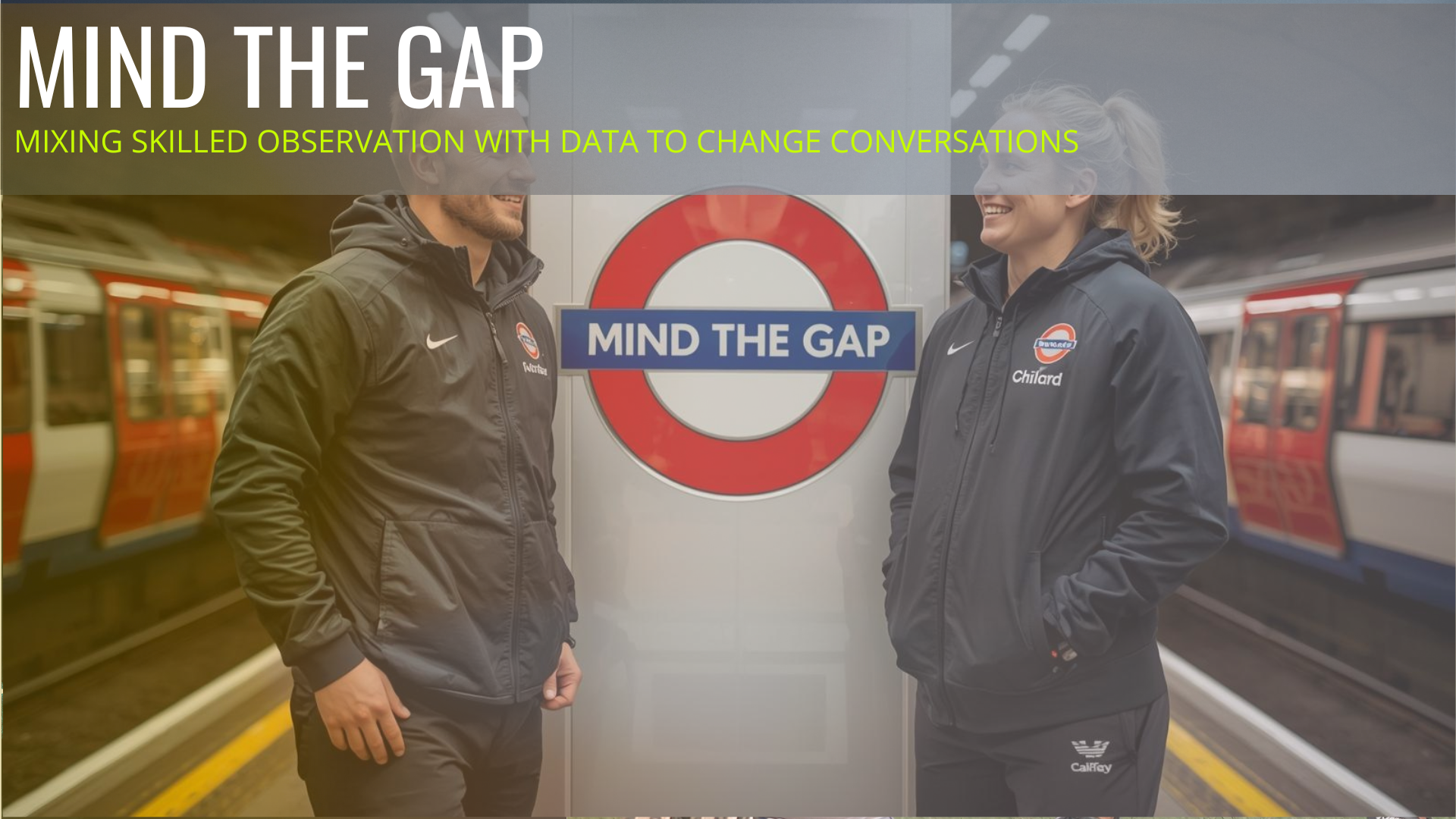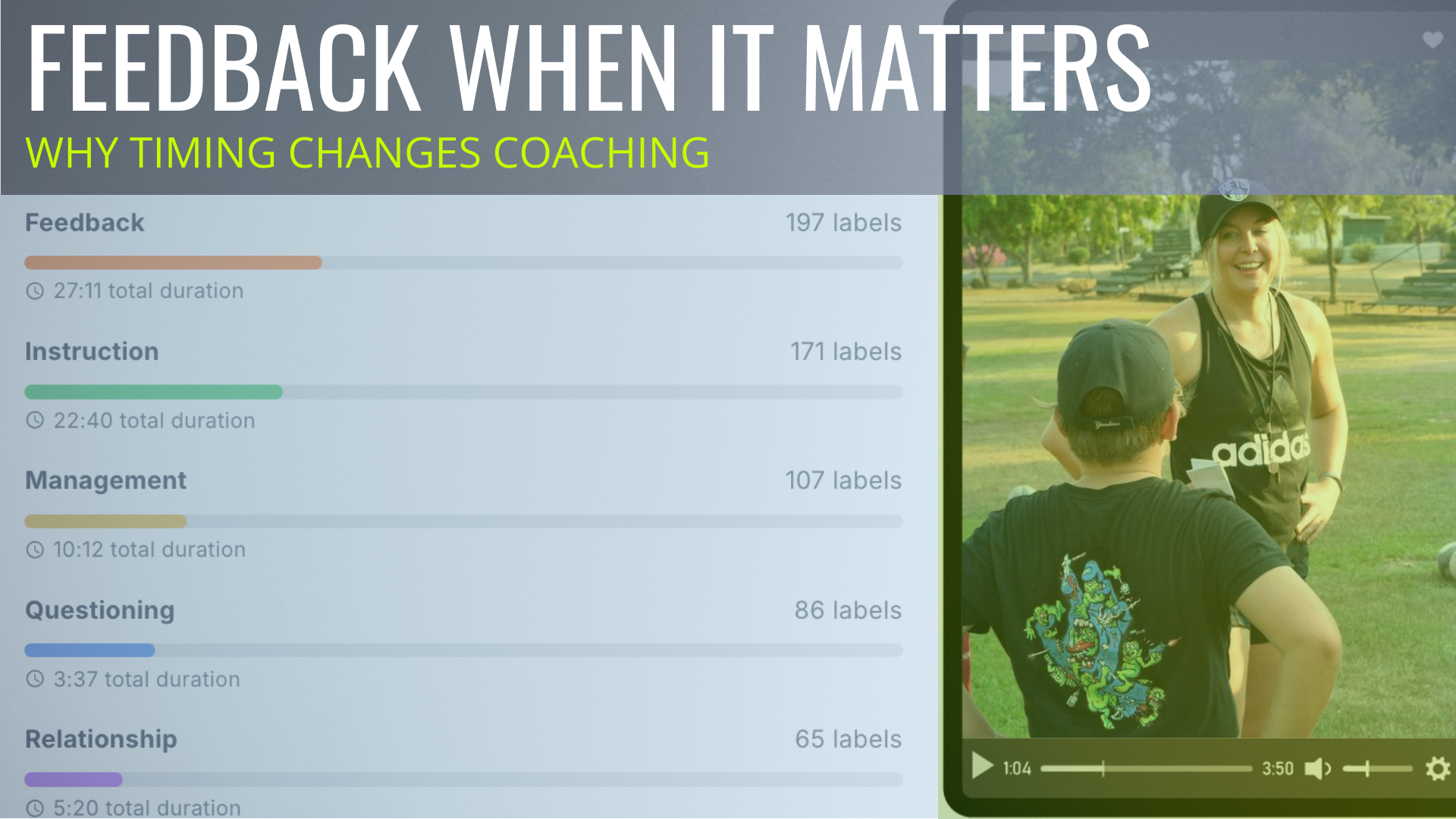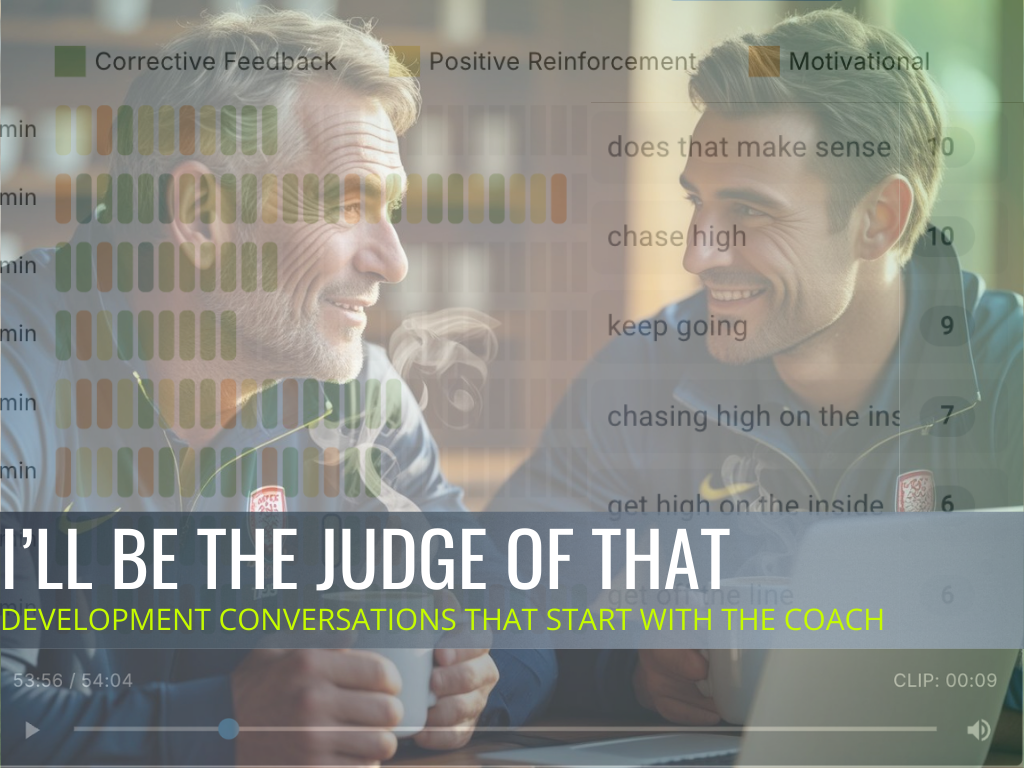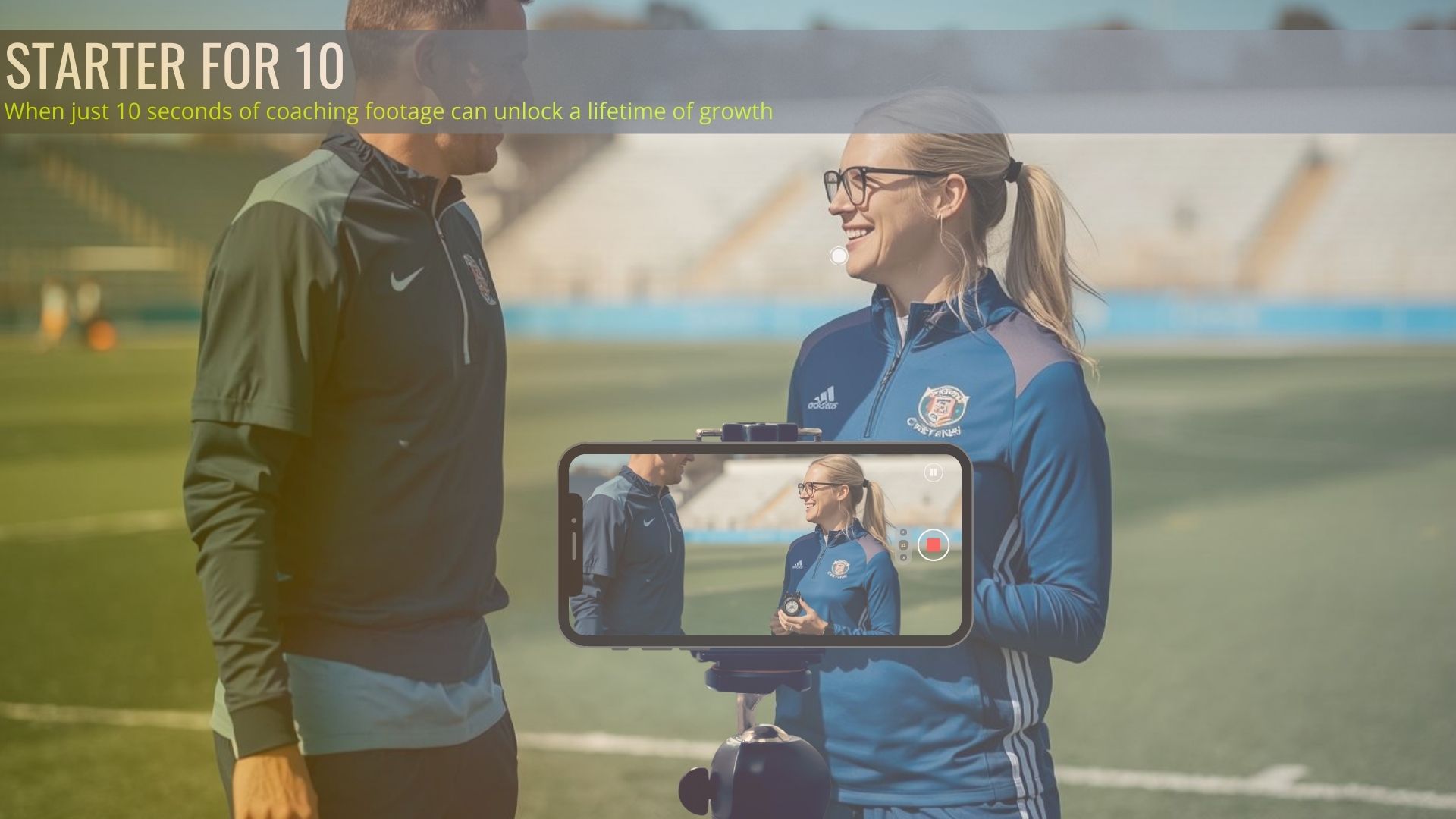Mind the Gap: Mixing skilled observation with data, to change conversations
The phrase on Tube platforms is a neat metaphor for coaching: there’s often a gap between what we think happened, what an observer saw, and what the evidence shows on review. Closing that gap is where real development lives.
In conversation with two coach developers.
- The first had observed a session with video and filled pages of notes. His headline: “The coach asked zero questions.”
- Later, he looked at the session analysis in SAM. It showed lots of questions.
- The penny dropped: there were indeed many “questions”, but almost none moved learning forward. They were the quick, managerial kind, “Are we ready?”, “Understand?”, “OK?”, “Happy?”, not the kind that spark thinking.
The second coach developer nodded: “That’s exactly what we see. Coaches remember asking loads of questions, and they did, but not the kind they meant.”
Three gaps that matter
1) The memory gap In the speed of a session, we remember the gist. If our intention was to use more questions, we can easily “remember” doing so, even if most were closed checks rather than prompts that open up decision-making.
2) The observation gap Even skilled observers can miss volume or timing when simultaneously tracking organisation, safety, and session flow. Without easy timestamps, the overall impression (“no questions”) can drown out the details.
3) The function gap Counting questions isn’t the same as understanding their purpose. A high questioning count can still mean low-quality inquiry if most questions are about readiness, not reasoning.
Why the mix of data and judgement works
This is where data + developer beats either alone.
- The analysis shows what happened (there were many questions) and when (they clustered in set-up moments).
- The coach developer adds so what: “These checks didn’t help players see options, anticipate cues, or explain decisions. Let’s design for that.”
It’s not a gotcha. It’s a reframing: from “Did I ask questions?” to “Did my questions change the quality of thinking?”
The anatomy of a useful coaching question
A simple way to think about it:
- Intent – What am I trying to unlock? (notice, decide, anticipate, transfer)
- Form – How will I ask it? (open prompt, probe, contrast, “what if…?”)
- Timing – When will it land? (prime before, pause during, consolidate after)
- Audience – Who answers? (named individual, unit, whole team)
- Outcome – What should happen next? (action, explanation, repetition, plan)
When those elements line up, a single question can change a passage of play. When they don’t, we get a pile of “OK?”s and “Ready?”s that keep the session tidy but don’t deepen understanding.
Closed checks coaches overuse (and how to upgrade them)
- “Ready?” → “What picture are we trying to create in the first five seconds?”
- “Understand?” → “Tell me what you’ll look for before you receive.”
- “OK?” → “If they press with three, what are our two best outs?”
- “Happy?” → “What would you change to see the same outcome quicker?”
The aim isn’t to ban checks, you need them. It’s to balance them with prompts that surface perception, decisions and reasoning.
A light process that closes the gap
1) Set an intention Before training, choose one focus (e.g., “Use questions that test scanning before the pass.”).
2) Capture and review a tiny slice Afterwards, pull two 10–20 second clips where you asked questions. (SAM helps surface these rapidly; the principle holds with any quick review.)
3) Coach-first reflection Ask: Were these checks or prompts? Did they come at the right time? Who answered? What happened next?
4) Upgrade one line Pick the most-used closed question from that session and write a better version. Use it on purpose next time.
5) Track lightly Over a few sessions, note whether your upgraded question appears earlier, more often, and with clearer player responses.
What we learned from this case
- “Zero questions” wasn’t true, but the impact was close to zero.
- Volume without function can lull coaches into overestimating inquiry.
- Timely, clip-first review changes the conversation from “did I…?” to “did it help?”.
- Skilled observation is indispensable: the coach developer spotted that questions clustered at set-up and rarely reappeared when decisions mattered.
Practical prompts for next week
- The two-clip rule: bring exactly two questioning clips to your debrief. Start there.
- The 1:1:1 rule: one check for safety/organisation, one prompt for perception, one question that links to transfer (“Where else does this show up?”).
- Name → Behaviour → Effect: “Alex, loved the early scan; it drew the 6. What did you notice?”
- Hold & return: if the ball must roll, tag the moment (“hold that”) and revisit at the next pause.
- “Because” habit: if praise pops out, “Good”, let because follow: “…because you curved your run to open the lane.” It turns noise into knowledge and sets up the next question.
Where SAM can help
Tools don’t replace judgement, but they shorten the loop. In this case, SAM made it obvious, in minutes, that the session contained many “questions”, then helped separate checks from prompts by showing where they clustered and what followed. That allowed the coach developer to spend time on how to ask better, not on proof that questions happened. In practice, SAM helps close the gap between what we remember, what we observed, and what actually changed learning.
Mind the gap. Not because anyone failed, but because the space between intention and impact is where the best coaching lives. When data and expert eyes work together, that space gets smaller, sessions get smarter, and players think better, one upgraded question at a time.
If you'd like to find out more about how SAM can help develop coaching practice at your organisation, please get in touch.






